Marcel Duchamp Plate
Hi all, I found two beautiful plates at an estate sale recently, and i’d love some feedback on them. I realize that they are not letter plates, per se, but I’ve found it hard to find much information on plates in general, so i’ll give this a shot. Any feedback would be greatly appreciated.
The first plate is very intriguing. It’s for one of Marcel Duchamp’s “Rotorelief” prints - Cerceaux. Everything corresponds exactly to the original print, including a track mark at the outer border as well as the name. The size is 20cm, which is the same as the original print, and it sits on a back panel made out of some kind of hardwood. It is plate signed, which the first editions of the Rotoreliefs are not. I’ve found some indication that Duchamps 1963 New York edition of the prints MIGHT have been plate signed. Furthermore, the plate has a scratch at “12 o’clock”, through the outer 2 bands. It’s pretty severe and i’m wondering if this could be an indication of the plate being ‘cancelled’, or if it’s just a scratch.
The second plate I have found absolutely nothing on. It’s beautiful though. I believe the initials are EJM.
Again - I hope I’m not out of line posting these in this forum. Any thoughts would be welcome. I realize I could take at least the Duchamp plate to get authenticated, and I probably will if I get an indication on if it’s worth it. I have a feeling it’s expensive to authenticate/appraise artwork? Where should I take if from here with these? How does one go about cleaning/restoring plates? If it proves to be authentic, is there a market for it? So many questions… Thanks everyone for your time. Attaching images of both plates as well as image of rotorelief original print.
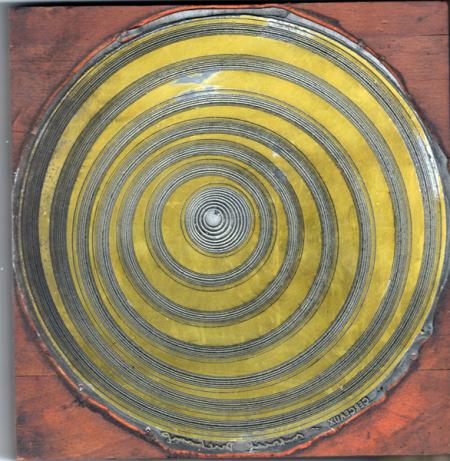
MDplate.jpg
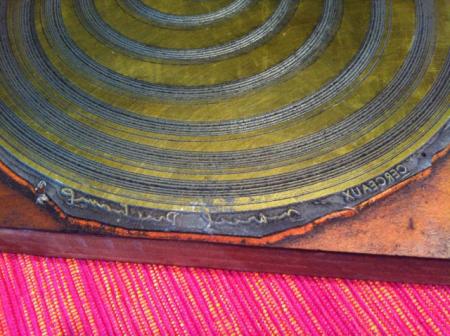
MDplateclose.jpg
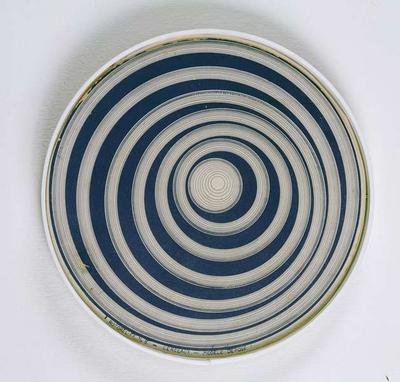
208959.jpg
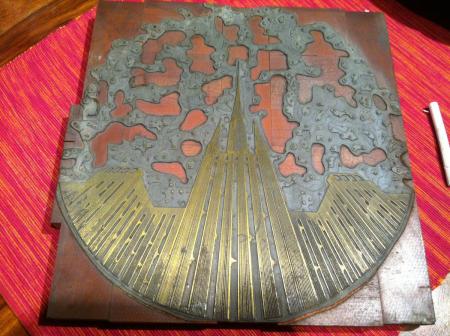
EJMfull.jpg
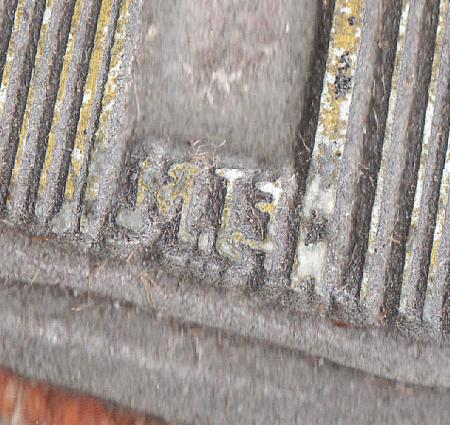
EJMclose.jpg
get some mineral oil on the surfaces to prevent more corrosion must be a Duchamp museum that might be interested…
The Duchamp plate is pretty cool. Do you have access to a press? It’d be interesting to see if it would yield a decent print.
Daniel Morris
The Arm Letterpress
Brooklyn, NY
Many art museums have a day a month when you can take any piece of art work to have it examined by a curator. While they won’t give you an appraisal they can generally tell you whether it’s authentic or not. However, that said, these look to me like conventional mounted zinc line photoengravings, reproductions of the original art, perhaps from an exhibition catalog. But they could be original printing plates too.
Bob
Still be careful with it, if they are the “Printing Plates” the Artist or his Estate still owns or control the “Image”.
Some 2 decades back, in the LV, NV area, a printmaker issued artwork from Plates used in the original Printrun.
It get’s ugly quick and expensive. I would oil the plates, as they corrode in contact with air, look at the original artwork and acertain how it was printed, if it was printed relief thus, you may have something.
Thank you for great input. Mineral oil it is! I have contacted a couple of museums, as well as some auction houses, but have yet to hear back. Even if it would be interesting to see the result of a test print, i won’t be printing anything from these; seems unethical, and like typenut says, it could potentially lead to a whole mess of legal issues.
Bob - you say “However, that said, these look to me like conventional mounted zinc line photoengravings….”. Since I know little about this process, in your opinon, what would the correct terminology be for the original printing of these?
The plates are relief plates — the top surface is the printing surface. They would be printed by letterpress. The yellow-orange color of the surface is the acid resist, which is a photo-sensitive coating applied to the blank zinc plate, then exposed through a line negative (all solid black and clear film). The resist is then washed off — the exposed area, being hardened, does not wash off. The plate is then processed in an acid bath in a machine, and the acid eats away the unprotected metal, leaving the image as a raised surface. The signature you see was part of the photographic image in the negative.
I suspect the prints you found were proofs of the plate from the photoengraver. The plates would probably have been part of a document like an exhibition catalog, printed on a high-speed flat-bed cylinder press. Since it’s a letterpress/relief process, the printing (that was the term used until photo-lithography became popular) would be termed “letterpress” now-a-days.
Bob
Bob - thank you for explaining it to me, I sure appreciate it. I’ve learned a lot in the process of researching this plate, which is awesome. The image of the actual print (blue), I just found on the web to illustrate the original printed piece (I wish I had found that exact print in real life, but it’s hanging in a museum..). Again, many thanks.
I would be surprised if these mounted photoengravings would really amount to much “value”. I seriously doubt they would be considered “art” by themselves, but the most damning aspect is the corrosion that has already taken place. Hard to see the detail of the corrosion in the first image, but the second one is already “a goner” - way too pitted to yield a decent reproduction of the original image. Most likely they were used to print images in a book or catalog, as mentioned above.
Rick